As "green, sharing, open and clean"
The first of the four Olympic ideas
"Hosting the Olympic Games green" is a solemn commitment made by China to the international community
Through scientific, technical and professional means
We kept our promise as promised
Successfully presented the Green Winter Olympics to the world
Low-carbon energy
As the proposed "2030 carbon peak, 2060 carbon neutral" goal after the first world-class sports event held in China, the Beijing Winter Olympics carbon emissions will achieve all neutral, the three major regions of the 26 venues for the first time to achieve 100% green power supply, green electricity mainly from Hebei Zhangbei region, clean energy supply has become a new highlight.
"Zhangbei Wind, light up the light of Beijing", 108 wind turbines independently developed and manufactured by CRRC Zhuzhou Institute, respectively, in Hebei Zhangbei, Shangyi and other wind farms stable and sustained high-quality operation. Among them, 108 sets of wind power blades are independently developed and manufactured by Times New Materials, with an annual power generation of more than 350 million KWh. Their continuous delivery of green electricity not only lights up the Olympic venues, but also lights up the lights of thousands of homes in Beijing.
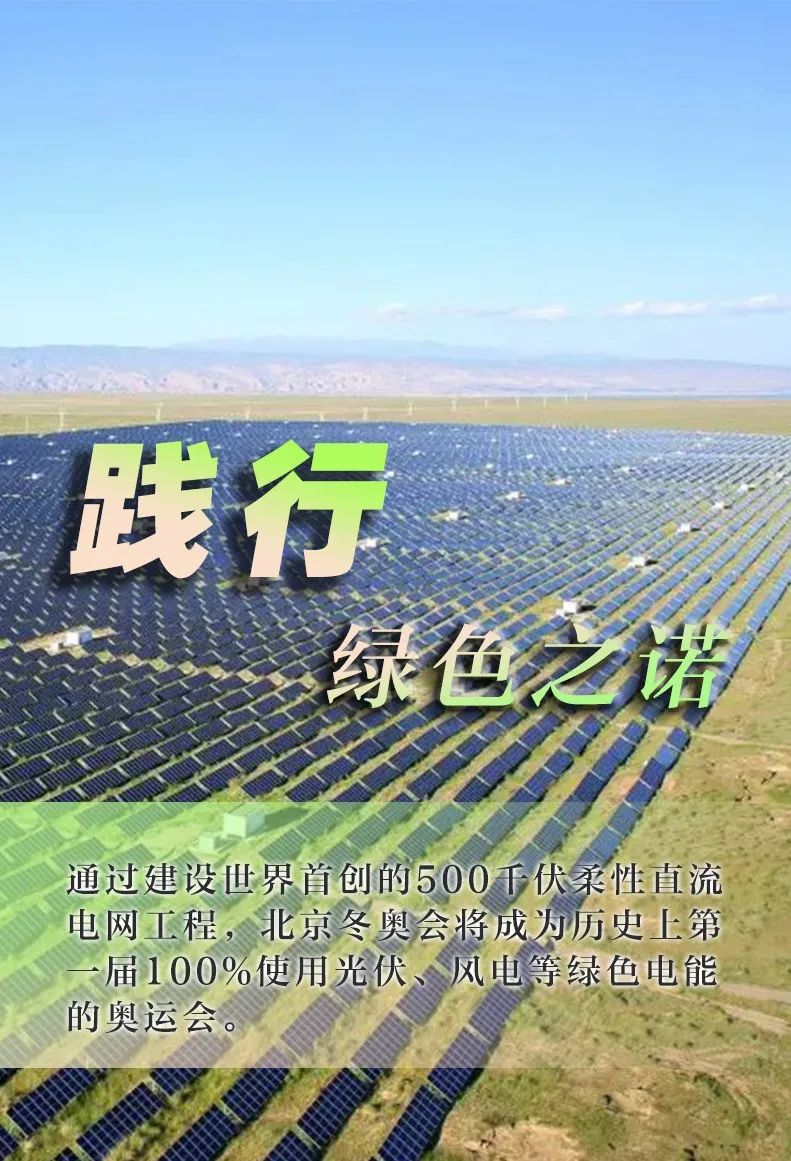
Low-carbon ice making
For the first time at the Winter Olympics, China has used carbon dioxide collected from industrial waste gas to cool ice venues, replacing ozone-depleting hydrofluorocarbons (HFCS). From "Water Cube" to "Ice Cube", fast, green and efficient ice making makes "water ice conversion" and "Double Olympic venues" possible. At the same time, intelligent snowmaking equipment is also used, which can reduce water consumption to a certain extent and continuously improve the efficiency of water resource use.
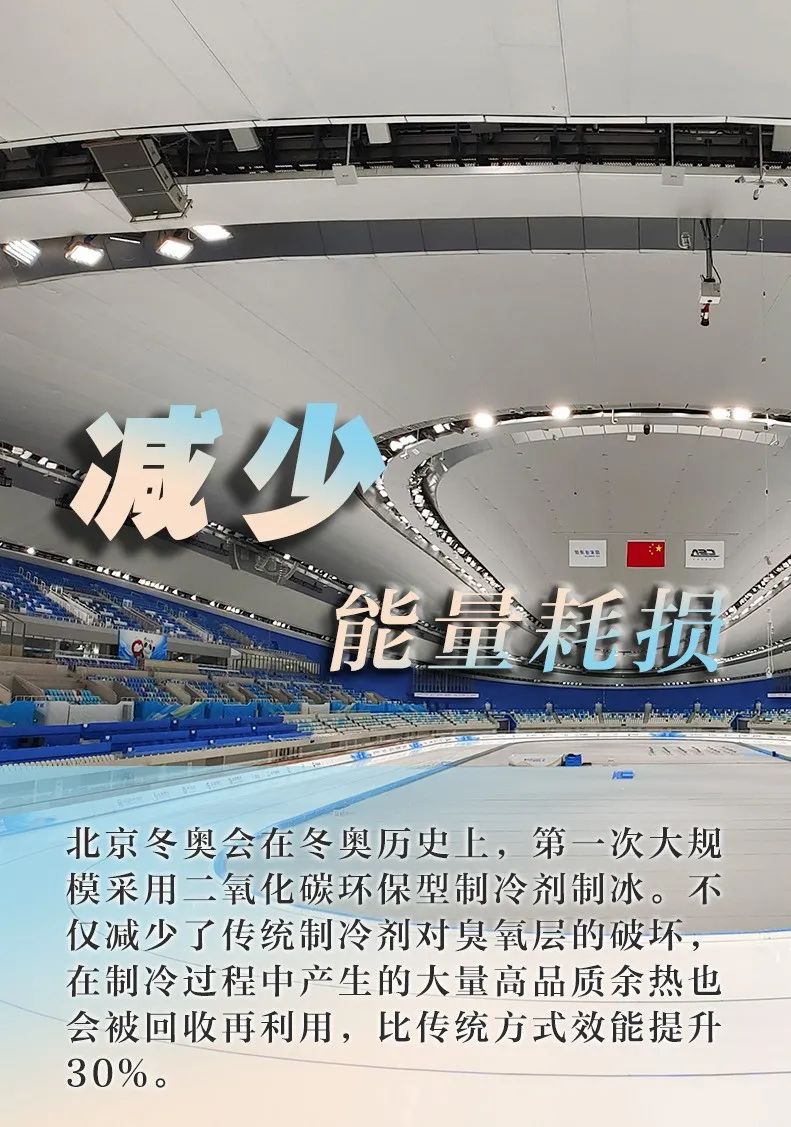
Low-carbon venue
Beijing has repurposing seven venues used for the 2008 Summer Olympics and other sporting events. Through the renovation of five Olympic venues, including the National Aquatics Center, National Stadium, Wukesong Sports Center, Capital Stadium and National Stadium, greenhouse gas emissions can be reduced by about 30,000 tons of carbon dioxide equivalent compared to new venues.
All venues meet the star standards of green buildings, and 51,174 square meters of ultra-low energy consumption demonstration projects are built. The 25 competition venues (13 new) also use low-carbon building materials such as recycled cement and smart snowmaking, which can save 20 percent of water consumption compared to traditional technologies.
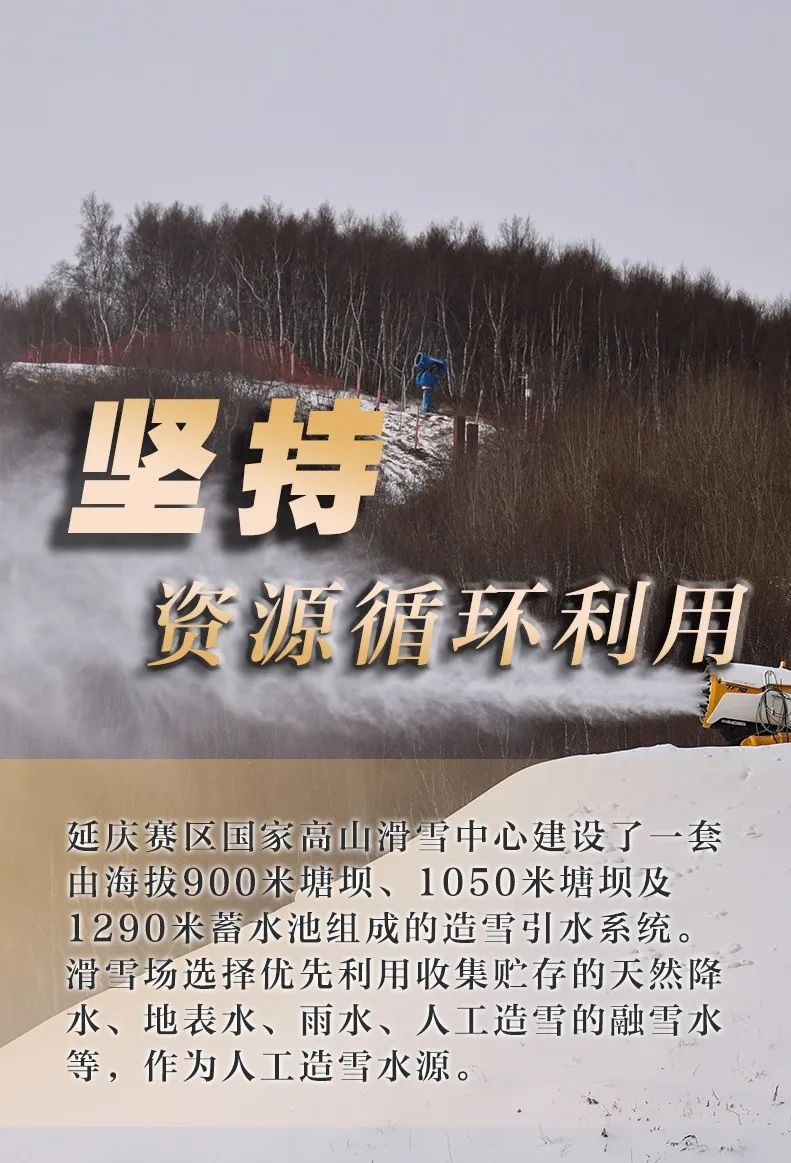
Low-carbon transportation
During the Winter Olympics, 4,090 vehicles will be used for transportation services, including 816 hydrogen fuel vehicles, 370 pure electric vehicles, 478 natural gas vehicles, 1,807 hybrid vehicles and 619 traditional energy vehicles. Energy-saving and clean energy vehicles accounted for 100% of the small buses, accounting for 84.9% of the total vehicles.
In addition, this Winter Olympics also adopted the establishment of Olympic lanes, the use of the city's existing clean energy buses and rail transit vehicles and other measures. At the same time, build a traffic resource management system to encourage the public to travel by public transport.
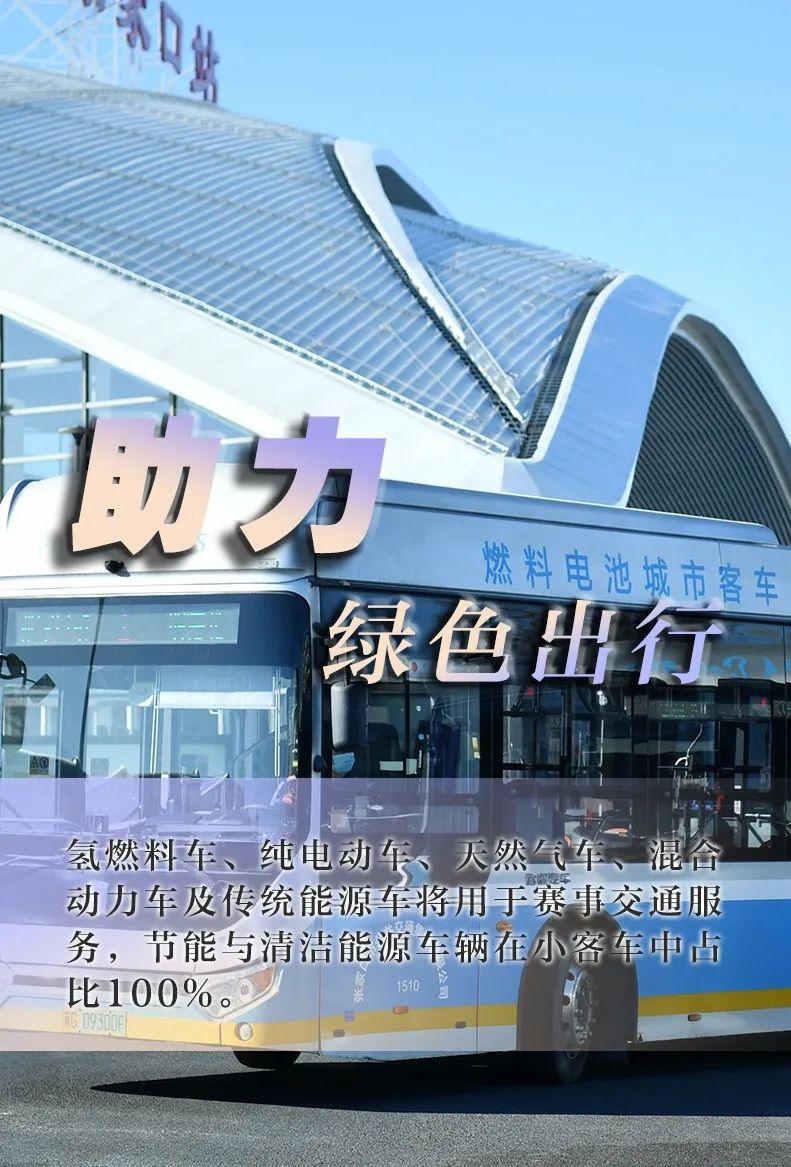
Green flame
The main torch of the Beijing Winter Olympics has the smallest flame in history, and this Winter Olympic flame is to reflect the practical concept of "low carbon and environmental protection" through "small fire". The torch of the 2008 Beijing Olympic Games consumes 5,000 cubic meters of gas per hour, although the torch is a hundred years of Olympic tradition, but in the face of today's low-carbon environmental protection concept, let the flame smaller, more in line with the requirements of today's world development, but also in line with the trend of world development.
The low-carbon environmental protection of the Beijing Winter Olympics may become a new tradition for future Olympic Games. From the blazing fire to the faint light, in today's global carbon emissions are high, through our continuous efforts to make low-carbon environmental protection become a habit, which is also another embodiment of China's social progress.
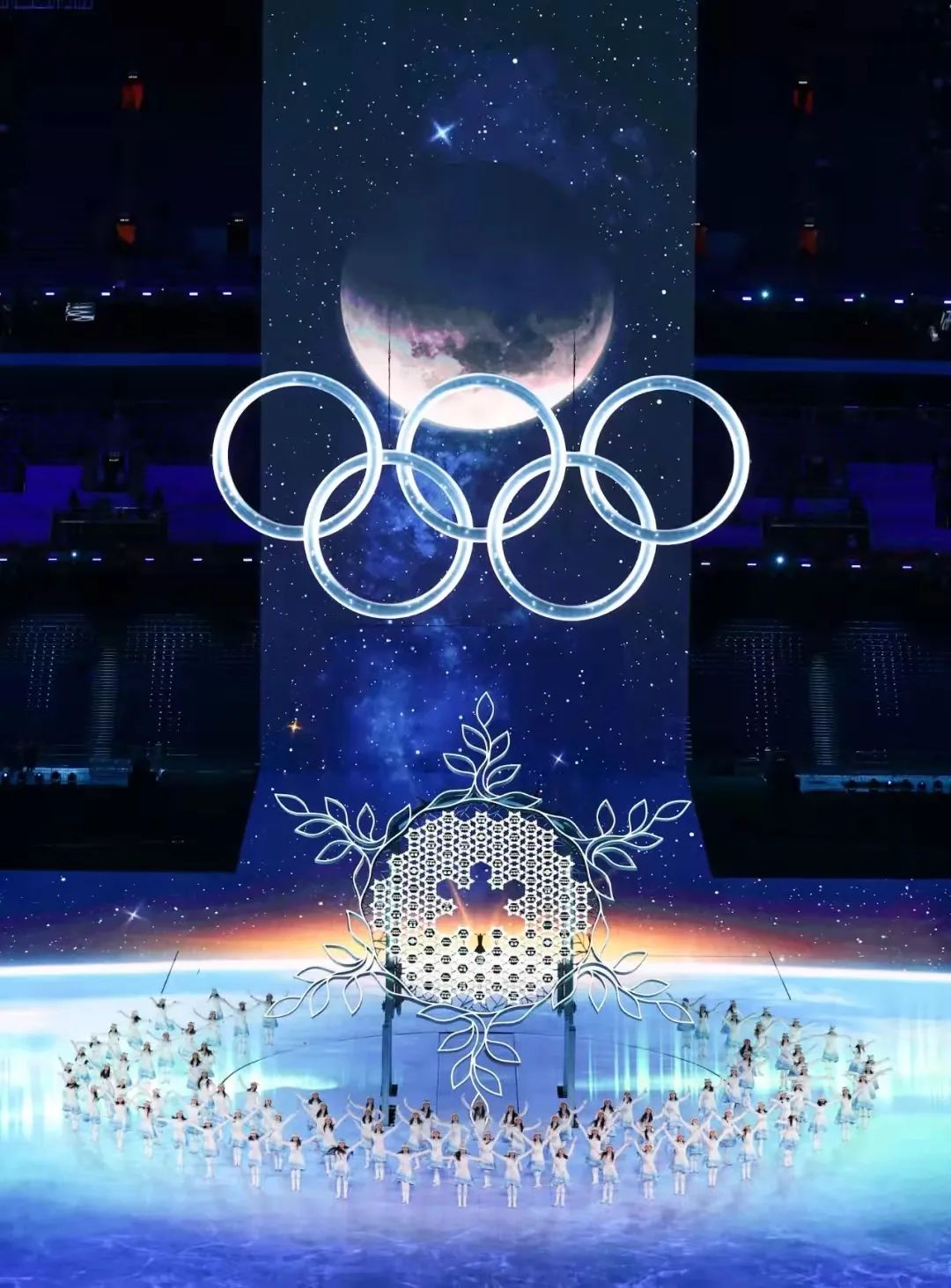
At every stage of the Games, simplicity and energy efficiency are being pursued, supported by new technologies that were not available 14 years ago. About 3,000 people participated in the opening ceremony of the Winter Olympics, only one-fifth of 2008, and the number of fireworks was only 1/10 of 2008, greatly reducing air pollution.
For the unavoidable carbon emissions, Beijing and Zhangjiakou plan to complete 710,000 mu of "afforestation and afforestation increase project" and 500,000 mu of "Beijing-Hebei ecological water source protection forest construction project" respectively, and donate the carbon sink of the first three to five years to the Beijing Winter Olympic Organizing Committee for carbon neutrality.
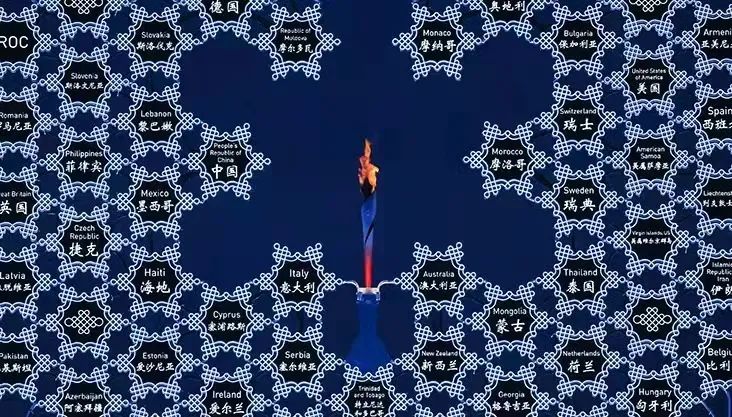
The ice and snow came as scheduled
We'll do what we always do
Uphold the principle of green, low-carbon and sustainable
Inspired by the Olympic spirit
Gather the development force of "Together for the future"
"Green and low-carbon"
We're always on the road!
No. 41, Beijing East Road, Xuanwu District, Nanjing
Nanjing China